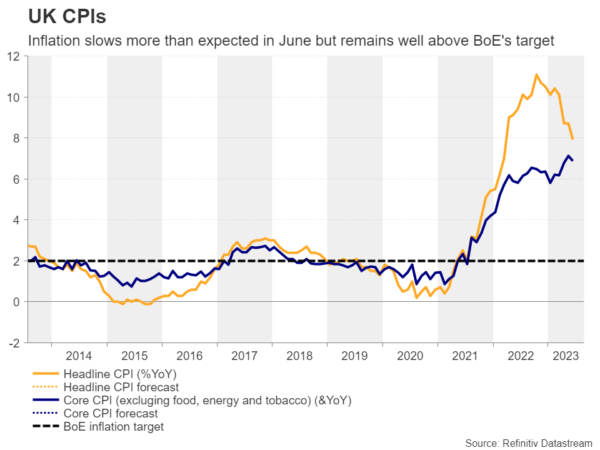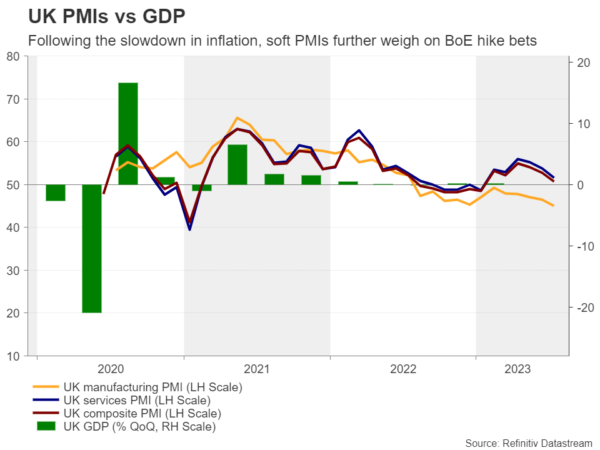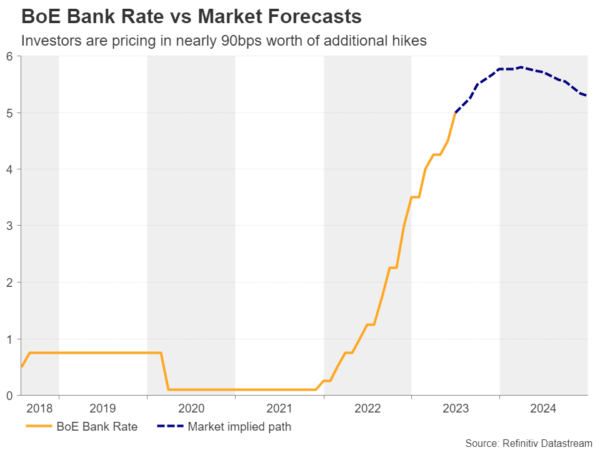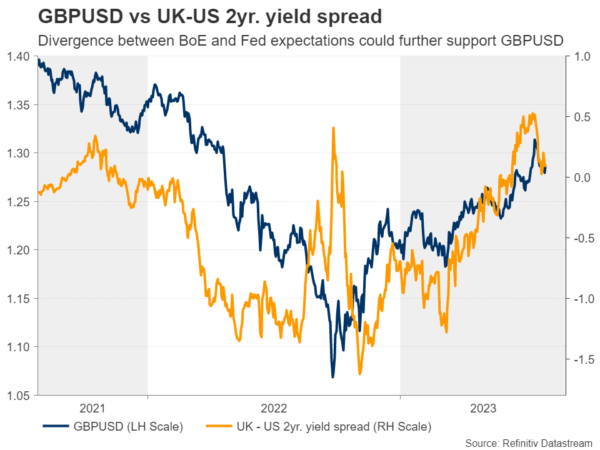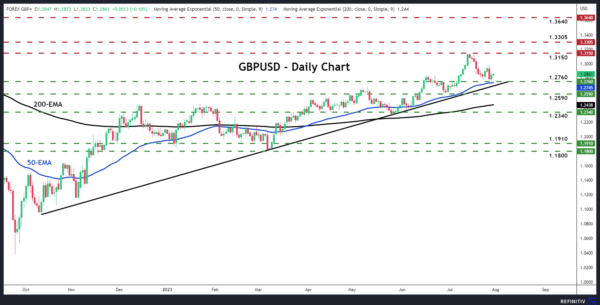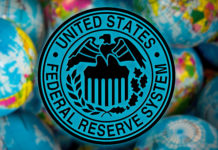With inflation in the UK slowing by more than expected in June and the July PMIs revealing that UK business activity continues to weaken, investors have become increasingly convinced that the Bank of England may need to slow down the pace of its future hikes and return to 25bps increments. The Bank meets on Thursday at 11:00 GMT and it will be interesting to see whether this will be the case and how the overall outcome could affect the British pound.
BoE accelerates tightening pace in June
At its June meeting, the Bank of England decided to proceed with a 50bps rate increment amid stubbornly high inflation and mounting political pressure, reiterating the guidance that if there were evidence of more price pressures, further tightening in monetary policy would be required.
The decision and remarks by Governor Bailey in the following days that they must act to bring inflation to heel, allowed market participants back then to maintain bets of another 50bps hike at the August meeting and more than 100bps worth of additional rate increases thereafter. This put the BoE at the top spot in terms of hike expectations among other major central banks and allowed the pound to stay in the front seat in terms of year-to-date performance of the major currencies.
But data since then has come on the soft side
Nonetheless, investors changed their minds as soon as the inflation data for June was out. The headline CPI rate fell to 7.9% year-on-year from 8.7%, while the core one slid to 6.9% y/y from 7.1% instead of holding steady as the forecast suggested.
The preliminary PMIs for July revealed that business activity continued to suffer, with the manufacturing index falling further into the contractionary territory, and the composite one, although still pointing to expansion, getting closer to the boom-or-bust zone of 50. On top of that, in the composite report, it was noted that the latest round of prices charged inflation was the slowest for nearly two-and-a-half years, suggesting that inflation may continue its cooling trajectory in the months to come.
Investors expect a return back to 25bps
Putting all these new variables into their calculations, investors are now seeing more chances for a 25bps hike on Thursday, and they have scaled back their bets with regards to the number of basis points worth of additional increments in the next gatherings. According to the UK overnight index swaps (OIS), there is a 70% probability for a quarter-point increase on Thursday, with the remaining 30% still pointing to a double hike. As for the future, conditional upon a 25bps hike now, investors expect around 65bps worth of additional rate increases thereafter.
But market pricing could still prove supportive for the pound
Having said all that though, underlying inflation in the UK rests higher than in other major economies and more than triple the BoE’s objective. With that in mind, investors’ implied BoE path, despite being lowered lately, remains steeper than those of other major central banks.
Combined with expectations that the Fed may have concluded its own tightening crusade last week and seen cutting rates massively next year, this divergence could still work in favor of pound/dollar if the BoE remains committed to deliver more in the coming months, even if it hikes by only 25bps at this gathering. Yes, a quarter-point hike could disappoint the 30% expecting more and thereby result in a small retreat, but a hawkish message could help the pair rebound quickly and extend its prevailing uptrend.
For the pound to suffer against its US counterpart post meeting, the BoE may need to signal that they are also getting closer to the end of their own tightening campaign. Now, in the case of another double hike, the pound is likely to shoot higher instantly.
Cable remains in uptrend mode, despite pullback
From a technical standpoint, Cable has been trading in an uptrend mode since the end of September, and above an upward sloping trend line since October 12. Despite pulling back lately, the pair remains above that trendline and above both the 50- and 200-day exponential moving averages (EMAs). All these technical indications keep the picture positive.
If the bulls are strong enough to recharge from near the aforementioned trendline, they could aim for another test near the high of July 14 at 1.3150. If they manage to overcome that obstacle, a higher high would be confirmed, and the 1.3305 barrier may come into play. A break higher could see scope for extensions towards the 1.3640 zone, which offered resistance in February 2022.
A dovish decision could result in a break below the uptrend line, but for a bearish reversal to be fully completed, the pair may need to fall below the 1.2340 key zone, which acted as both support and resistance in the past.




